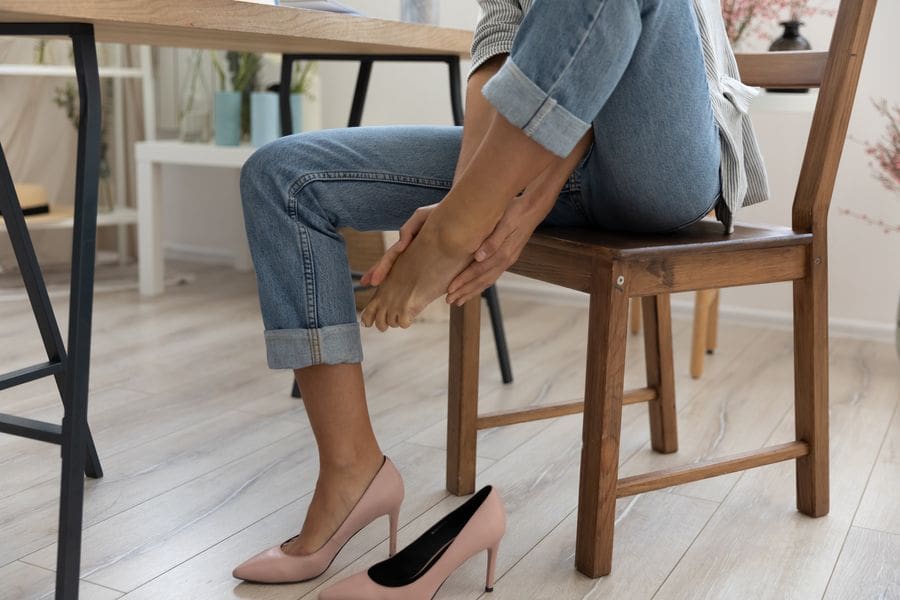According to Healthline, about 20% of people will experience an ingrown toenail in their lifetime. These unsightly nuisances can produce pain, redness, swelling, and, in some cases, infections. Luckily, there are many effective ways to treat ingrown toenails at home. Let’s discuss!
What Is An Ingrown Toenail?
To properly treat your ingrown toenail, you must first understand what it is and how it forms. Ingrown toenails occur when the corner or edge of the nail grows or curves into the surrounding skin. There are many causes, including stubbing or injuring your toe, wearing tight shoes, having poor foot hygiene, or cutting nails too short. Ingrown toenails can technically happen on any nail bed, but they most commonly affect the big toes. As soon as you recognize you have an ingrown toenail, it’s important to treat it immediately to prevent it from getting worse.
Soak in Warm Water
An easy way to treat an ingrown toenail is to soak the foot in warm, soapy water. This will help lower the toe’s swelling. Aim to keep your foot in the water for at least 20 minutes.
Soak in Apple Cider Vinegar
Another way to treat your ingrown toenail is by soaking your affected foot in apple cider vinegar, which is known for relieving pain and reducing inflammation. For optimal results, use warm water and about ¼ cup apple cider vinegar and soak for at least 20 minutes.
Use an Antiseptic Ointment or Cream
Over-the-counter ointments such as Neosporin, Polysporin, and Bactroban can lower your risk of infection. After applying the ointment, be sure to properly cover and bandage the area to reduce exposure to bacteria.
Wear the Right Shoes
Wearing tight shoes is one of the main causes of ingrown toenails. Wearing comfortable-fitting shoes lowers your risk of getting more ingrowns and prevents your current ingrown from worsening. Consider wearing open-toed shoes if you are in the process of healing an ingrown toenail. This will limit the tightness and pressure on the affected nail.
Take OTC Medication
An ingrown toenail can be painful. Consider taking Tylenol or Advil to reduce the pain and help with the swelling. Be sure to only take the recommended dose of the medication.
Wear a Toe Protector
Consider wearing a toe protector as a barrier around the ingrown from the rest of your toes. Toe protectors are available as rings that fit around the toe or sleeve that covers the entire toe.
Take Prescribed Oral Antibiotics
If your ingrown toenail is getting worse, consider seeing a doctor who may prescribe oral antibiotics that can help with the infection. Common oral antibiotics for ingrown infections include Omnipen, Amoxil, Moxatag, or Vancocin.
Nail Removal
If your ingrown toenail is getting worse and isn’t responding to any of the above treatments, you may need to consider surgery. This can include either a partial or full nail removal, depending upon the severity of the situation. Be sure to talk to your doctor so that you can review your options.






